Existing Templates and Create New Templates” is not just a phrase, but a powerful approach to efficiency and creativity in your projects. By leveraging existing templates, you can save time and ensure consistency, while creating new templates allows for customization and innovation, adapting to your unique needs and preferences. This balance between utilizing what is already available and injecting fresh ideas is essential for any dynamic and evolving project. Remember, the right templates can transform your workflow, elevate your presentations, and enhance your overall productivity. So, start exploring today and see how existing and new templates can revolutionize the way you work.
What is Excel Template?
A template in excel is a sort of file or a pre-designed sheet which when opened in excel, creates a worksheet or spreadsheet according to the template’s file setting. The basic ingredients are already integrated into the template file so you don’t need to put the values, structure or formula every single time you want to use it. In other words, templates in excel are pre-designed sheets which the users use to create new worksheets with the same layout.
How to create spreadsheet using the Existing Templates
You can create a new worksheet using the existing templates provided by Microsoft Excel. Follow the steps below.
Step 1: Open Microsoft Excel and click on New. It will show you all the templates available for use in your excel.
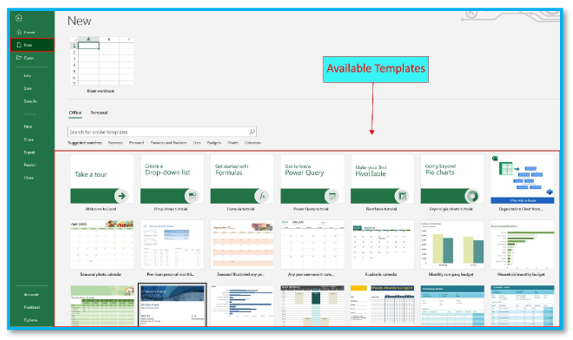
Step 2: Chose a template you wish to work on and click on it. A preview tab will appear on your screen with additional details. If you like the preview of that particular template, just click on Create.
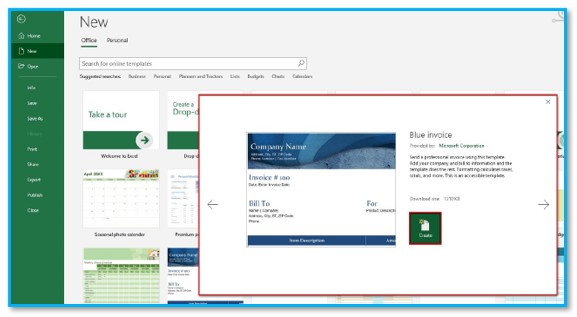
Step 3: The selected template is downloaded and a spreadsheet will open for you based on that template’s setting.
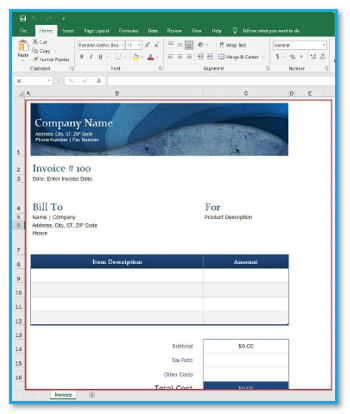
How to create New Templates
You can create a template by saving an excel spreadsheet. The steps required to create a new template is given below.
Step 1: To make a new template, first create a worksheet and then click on File.
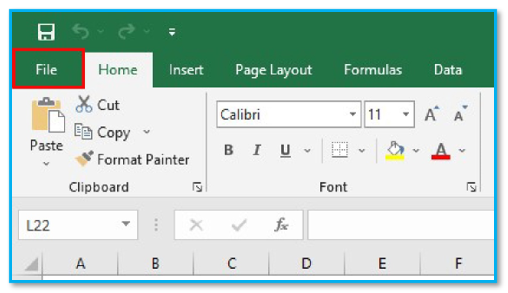
Step 2: Now select Save As and then click on Browse.
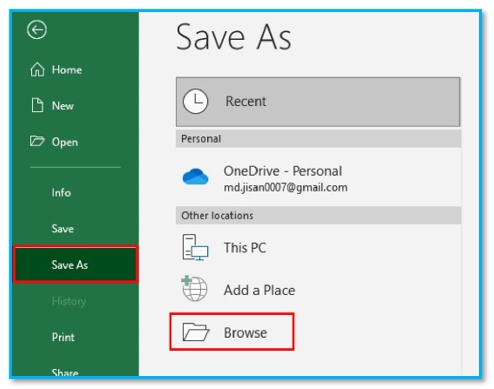
Step 3: Name your spreadsheet on File Name box and select Excel Template from Save as Type. You can also select Excel Macro-Enabled Wordbook if your workbook contains a macro.
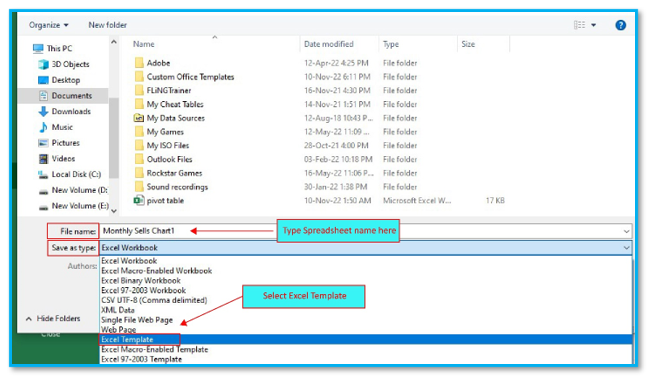
Step 4: Notice the location where your template is going to be saved. It’s usually located in- C:\Users\<username>\Documents\Custom Office Templates this location. You can change the location to somewhere else if you want by selecting that file, folder or location and click on Save. Your custom template is saved.
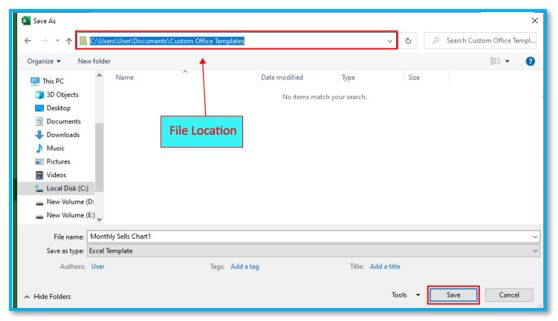
Step 5: Now if u want to use that template you just made, simply open your Excel and click on New. Select Personal to view your custom-made template. Select it and use it.
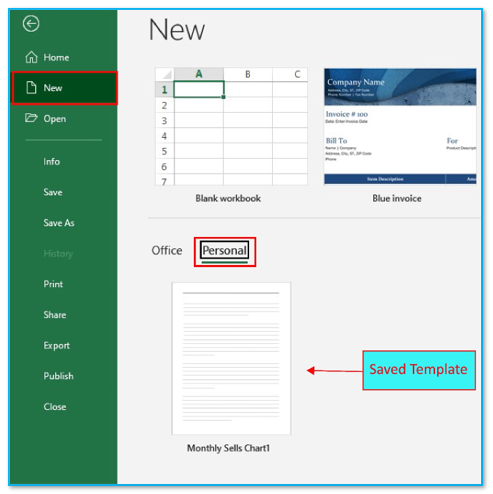
How to find and download more Templates
If you want more templates for bringing flexibility in your work, you can find it through search box and download for further use. Follow the steps to download templates online.
Step 1: Open your Microsoft Excel and click on New. You can select any category of templates from Suggested Searches by clicking on the category name you like.
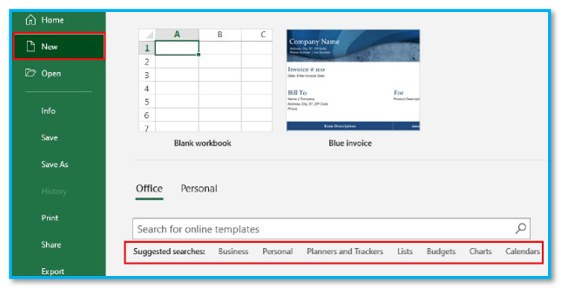
Step 2: Or you can type corresponding words in the search box to find that particular type of templates you’re looking for.
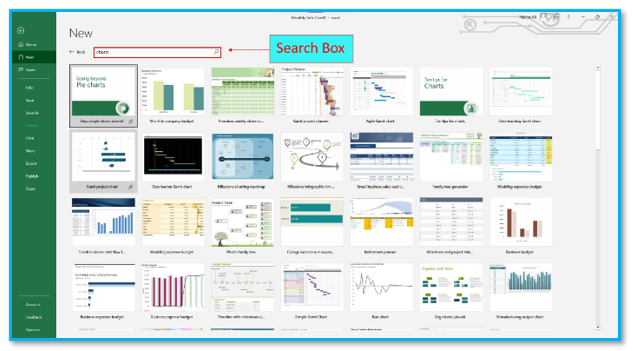
Step 3: If you find any template you like simply click on it and select Create. That particular template will be downloaded.
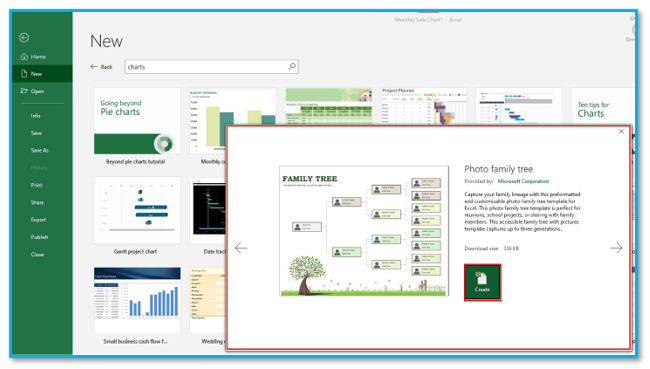
Application of Existing Templates and Create New Templates
- Streamlining Workflows: Existing templates provide a standard format, reducing time spent on setting up new documents or presentations, thus streamlining repetitive tasks.
- Brand Consistency: Using established templates ensures that all materials produced are consistent with brand guidelines, enhancing professional image and brand recognition.
- Rapid Prototyping: Create new templates to quickly mock up designs or ideas, allowing for faster feedback and iteration in the development process.
- Customization for Specific Needs: Tailoring new templates to specific project requirements or audience needs, providing a personalized approach that increases engagement and effectiveness.
- Cost Reduction: Utilizing existing templates can significantly reduce the need for external design services, saving money while maintaining quality.
- Educational Tools: Templates, both existing and new, can serve as educational tools, guiding users through the necessary steps and information required for particular tasks or projects.
For ready-to-use Dashboard Templates:
